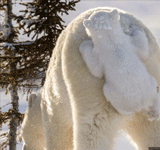| 62-year-old still hopes to find legendary wildman | |||||||||||
|
|||||||||||
//english.dbw.cn 2016-09-19 10:41:47 |
|||||||||||
 Zhang Jinxing rests during an expedition in Shennongjia, Hubei Province, in April 2001. [Photo: CFP] Zhang Jinxing has spent the last 22 years in search of the Chinese Bigfoot, or yeren, in Shennongjia, a nature reserve in the western part of Central's China Hubei Province. No solid proof of its existence has been found so far, but Zhang's efforts have earned him a nickname - Zhang yeren. With his long thick beard, tanned skin and tall frame, the 62-year-old has become just as famous as the legend of the yeren among locals. When the reserve was included on the UNESCO World Heritage List in July this year, Zhang, known as the first self-funded yeren hunter, has come into the media spotlight again. His yeren museum in Muyu township, located at the foot of the highest mountain in the reserve, has been receiving more visits recently. In 1994, when he came to Shennongjia for the first time carrying 100 kilograms of equipment and daily necessities, he swore that he would not shave until he had unlocked the mystery of yeren. But decades on, he has discovered nothing except mysterious feces, about 100 strands of hair and 3,000 footprints which he believes are evidence of the yeren's existence. Many people, including his family members, have said he is crazy. Some have even accused him of pulling a commercial stunt. Zhang has chosen to ignore them and continue. "I feel the yeren is beckoning me. I'm destined for this. The yeren is my love," he told the Guangzhou Daily in a recent interview. He claims that he has sighted yeren several times. "They seemed afraid of me. One time, I threw them wild fruit, one yeren came, took it and quickly ran away," he said. He estimates that there are at least 20 yeren in Shennongjia. According to his description, they are about two meters tall, have strong arms, are covered with reddish brown hair and can walk upright. The latest encounter occurred in winter three years ago, he said. A large figure flashed across the hillside and stopped at a tree, but disappeared when he got closer. Arduous journey An adventure enthusiast, Zhang came to Shennongjia after reading about yeren sightings in the news. At the beginning, he survived on biscuits, instant noodles and fruit and slept in a tent or in caves. Gradually, he built sheds out of wood and thatch on the paths which he regularly used. In them, he stored necessities such as pots, rice and flashlights. "Before, it was easy for me to carry 50 kilograms of gear on a hike. But it's not now, I'm getting old," he said. For each expedition, he needs to take food for a month together with a tent, a canteen and a camera. His meals usually consist of edible wild herbs and porridge. He seldom eats meat, as he believes the smell will drive yeren away. But his efforts are not without danger. He has fallen off a cliff and broken his fingers, been stuck in a storm for five days, escaped a wild animal attack and been struck by lightning. One day in 1995, when investigating what he believes to be yeren feces, he walked into a cave when a bear scratched his face. He turned and ran, eventually escaping the bear. However, the most difficult thing for him to escape is loneliness."You can't imagine what it's like to have no one talking to you for three months. The loneliness bites my heart like a worm. I've even thought of banging my head into a tree," he was quoted as saying by the Guangzhou Daily. He has become interested in reading books about plants and wildlife. So far, he said he has written 3 million words of field notes and 80 analysis reports, and collected more than 3,000 specimens. But Zhang's family members see his obsession with yeren as a waste of time. He has been married twice since coming to Shennongjia, with each marriage lasting no more than three years. Both women were said to be fans of his who gave up their affluent lifestyles to support him. "It's tough to be married to someone like me who lives in mountains throughout the year, like a yeren," he said. Pan married Zhang in 2007 and left him in 2010. "We married hastily. But I back what he is doing. It's unfair to smear him. He persists in Shennongjia out of his passion and love for nature, not stubbornness or profits," Pan told the Global Times on Tuesday. Commercial stunt? Zhang says he spends 10 months a year in the mountains. The locals say this was true in the first decade, but after 2004, he was busy participating in various activities and scarcely went into the mountains. The prices for the items for sale in his museum are clearly marked: a book he wrote costs 23 yuan ($3.4), plus an extra five yuan for his signature, and five yuan more to take a photo with him. The package price for all three is 30 yuan. To encourage his exploration, the Shennongjia Forestry District gives him 20,000 yuan each year as a living allowance. But that is far from enough. Zhang said he needs to spend about 100,000 yuan each year. The government launched high-profile scientific investigations into the yeren in the late 1970s, but the expeditions ceased several years later due to poor results. Now, the local government's attitude toward the yeren issue is "Don't promote, report or support," Wang Zhixian, director of the reserve's administration bureau, told the Global Times. But the legend of the yeren has become a major attraction for Shennongjia, where tourism is an important source of income. Throughout Shennongjia, it's common to find yeren used in the names of local restaurants, hotels and snack stands. Some locals even wear yeren costumes and charge tourists to pose for photos with them. Zhang has promised to one day make public all the evidence he has collated, but is reluctant to do so now. "Once I make it known, will the yeren still live freely and peacefully?"
|
|||||||||||
| Author: Source:CRI Editor:Yang Fan |
|||||||||||
 中文简体
中文简体










